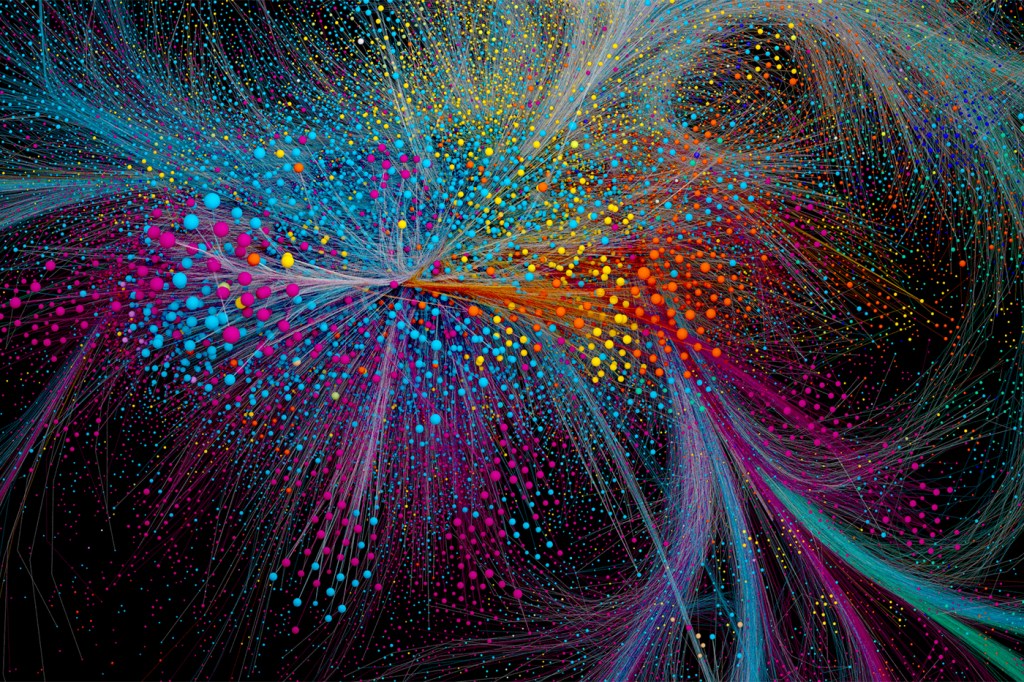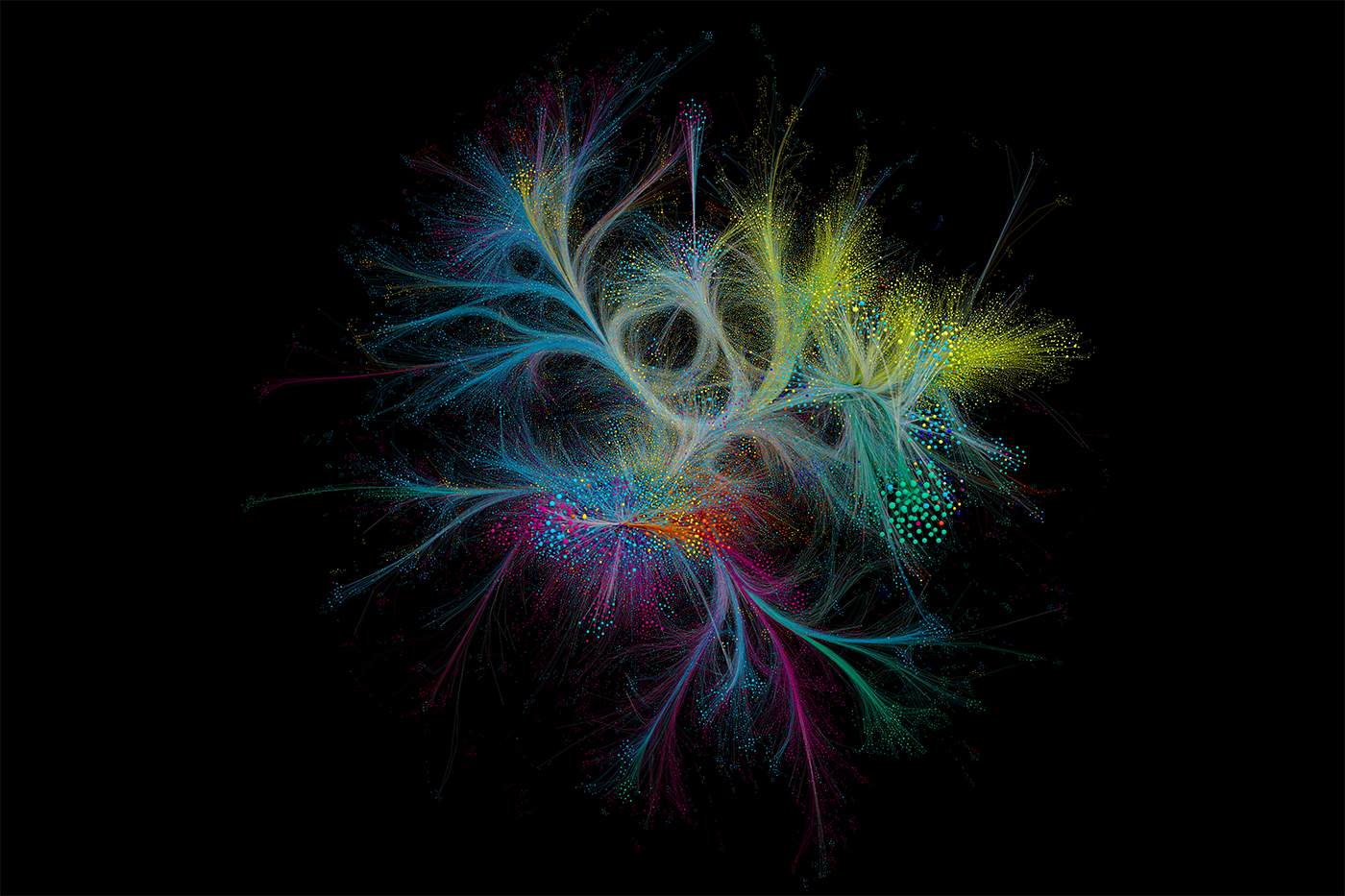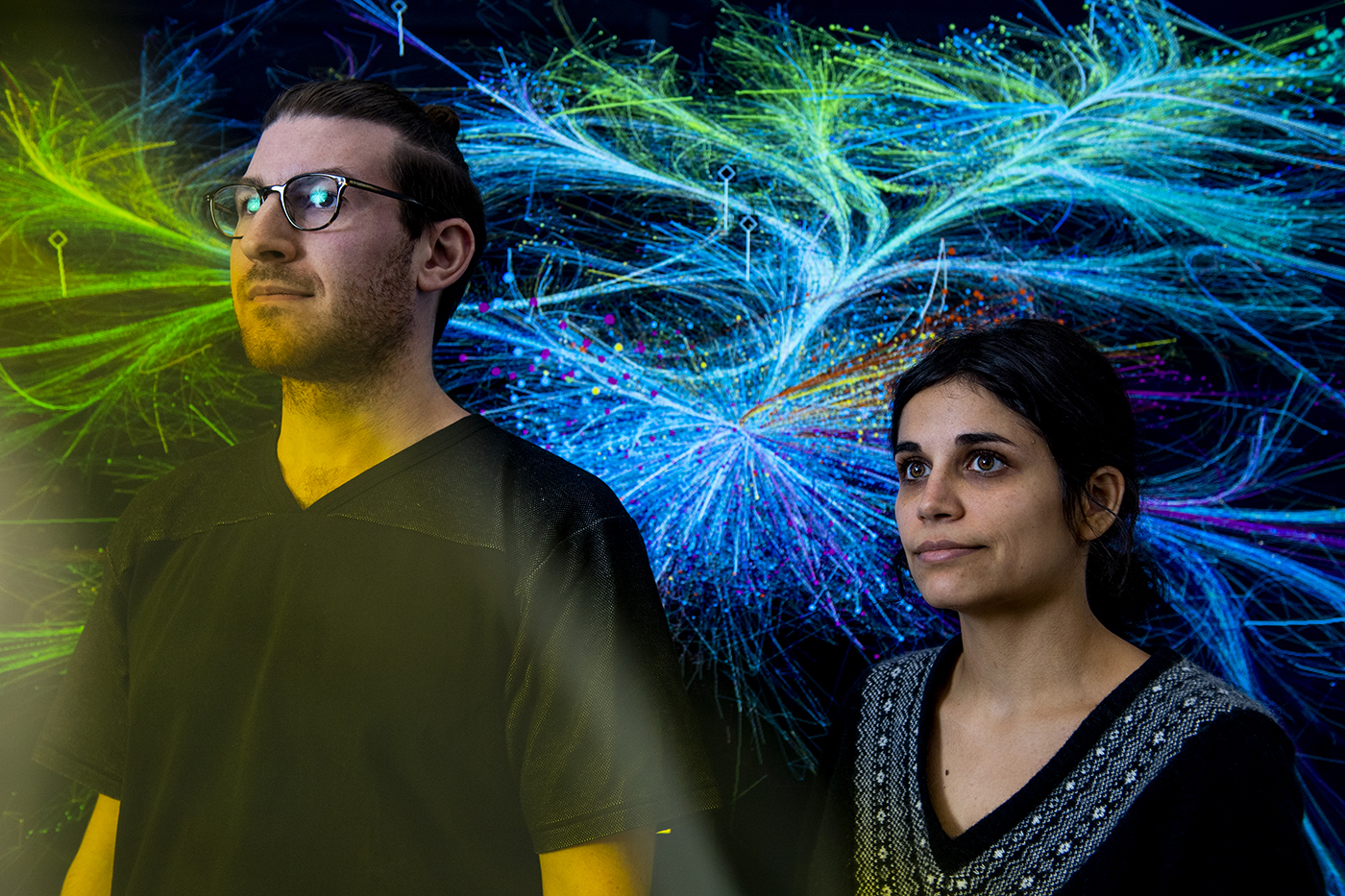A cosmic data visualization celebrates science journal Nature’s 150-year anniversary

It looks otherworldly, at first glance, like a pattern of more than 80,000 stars within the Milky Way.
They emit a peculiar variety of colors—blue, red, green, orange—from the screen of your phone or computer. And they can be manipulated. With your fingertips, or your mouse, you can expand them or diminish them, or you can spin them around.
This cosmic vision was presented to the editors of Nature, the acclaimed British science journal. They had asked Northeastern’s Center for Complex Network Research to take on an assignment that was massive in scope: Analyze, categorize, and ultimately visualize the tens of thousands of articles that Nature has published over the past 150 years.
The center—directed by Albert-László Barabási, Robert Gray Dodge Professor of Network Science at Northeastern—had come up with the interactive visualization of Nature’s vast catalog, which was arrayed like something seen through the Hubble telescope. As the Nature editors were taking in this spectacular view, Alexander Gates, associate research scientist at the Barabási Lab and leader of the project, revealed a startling breakthrough: Every star on this map was linked to an article from the journal’s vast catalog.
“We showed them, and it didn’t register,” says the lab’s data visualization specialist Alice Grishchenko. “We had to say it again. And then they were like, ‘Wait—it’s all clickable?’”

The 150th anniversary issue went live online last week. The Northeastern visualization focuses on the majority of Nature articles that have been cited scientifically—88,637 in all. The articles are color-coded into 14 groups: blue for biomedical research, green for physics, orange for humanities, and so on.
Blended together, the colored points of light create an interdisciplinary map that has been supplemented by another creation of the Barabási Lab: An infographic that shows how the integration of scientific disciplines leads to discoveries.
An analysis of Nature’s database by Barabási’s team reveals that interdisciplinarity has been increasing in science overall for the past 110 years. No longer are the scientific disciplines being siloed off from each other.
“It’s this idea of standing on the shoulders of giants,” Gates says. “This work doesn’t occur in a vacuum. It is built from a whole cascade of ideas.”
Additionally, Nature’s editors chose to feature a half-dozen articles of particular prominence, including breakthrough 1985 research on the depletion of the ozone layer in Antarctica, a 1953 study of the molecular structure of nucleic acids, and a 1976 report on single-channel currents recorded from the membrane of denervated frog muscle fibers.

The Barabási Lab itself drew from a variety of skills after being approached by Nature in May, culminating in a video that comprehensively tells the story of Nature’s quest for understanding over these 150 years.
“It speaks to László’s foresight to have built up the resources in the lab to be able to pull off a project like this over such a short period of time,” Gates says.
The centerpiece is, undoubtedly, Grischenko’s visualization of Nature’s cosmos. The vivid interdisciplinary relationships leave you with a humbling image of scientific exploration, profound and tangible, inspiring and alluring.
As you look upon the stars, you find yourself wishing to voyage ever more deeply into the discoveries of science. To know more.
For media inquiries, please contact media@northeastern.edu.






